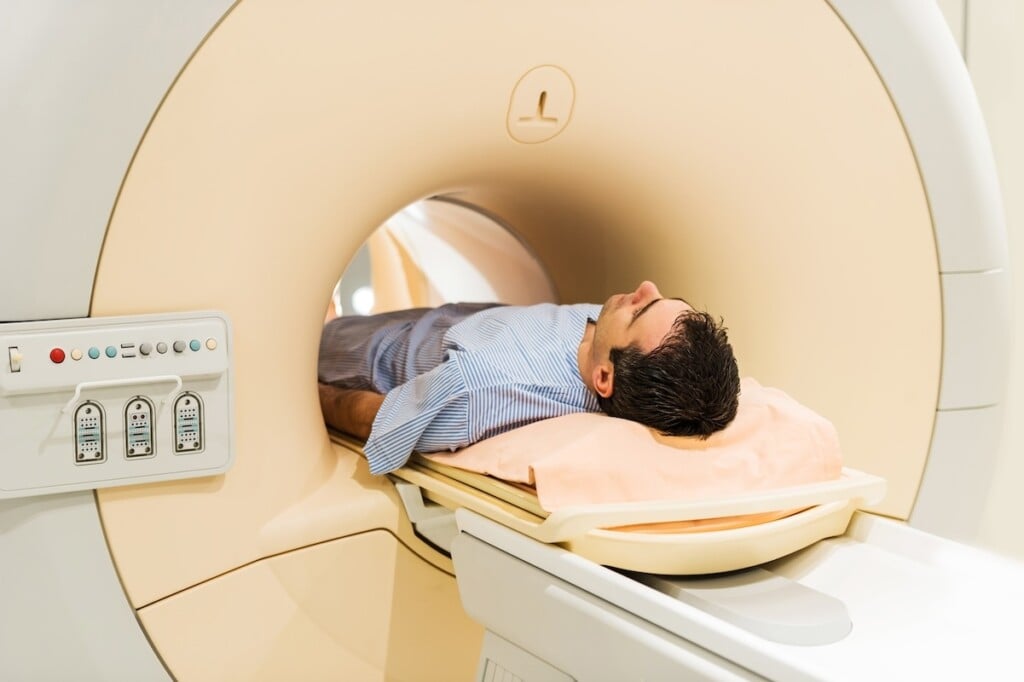Do You Understand Prostate Cancer?
If you’re a man—or have a man in your life— it may be time to clear out the cobwebs in your knowledge of this common, potentially deadly disease.

Quick, pop quiz—what are the four most common types of cancer worldwide? According to the World Health Organization, they’re breast, lung, colon-and-rectum and prostate. Prostate cancer is so widespread, in fact, that one in every eight men will be diagnosed with it in his lifetime, per the American Cancer Society (ACS).
“Some patients are really good about asking questions and doing their own research,” says Mina M. Fam, M.D., a urologist affiliated with Hackensack Meridian Health’s Jersey Shore University Medical Center. “Others are not. There’s a fear of treatments that sometimes drives people not to get screened. But, in my mind, knowledge is power in this situation. The fewer surprises, the better.”
It is perhaps men’s hesitancy to discuss their health—and ask questions—that has helped to allow misconceptions about prostate cancer to flourish. To mark Men’s Health Month in June, MONMOUTH sat down with Dr. Fam to clear up a few of them:
• “It’s an old man’s disease.” Through your chances of getting prostate cancer increase as you get older, it’s not unheard of—or even terribly uncommon—for it to be diagnosed in early middle age. “The unfortunate part is that the prostate cancers that occur in younger men are typically more aggressive than the ones that occur in older men,” says Dr. Fam. “So it’s even more important that those patients are identified and treated early.” Screening for prostate cancer typically starts in a man’s late 40s or early 50s. The national guidelines given by the ACS suggest 50. Other risk factors, such as a strong family history of the disease, bump it down to 45, or even 40.
That screening involves both a physical exam by a doctor and a blood test that’s looking for prostate-specific antigen, or PSA. Men with prostate cancer tend to have a higher PSA number than those who don’t, so this test is often used as a first step in the diagnosis process. Also important to note, says Dr. Fam, is that “PSA can be elevated for a number of different reasons not related to cancer— for example, urinary tract infections or inflammatory or infectious prostatitis, where there’s inflammation of the prostate. If PSA is drawn after sexual activity, it can also be elevated.” He adds, “If you ever have a PSA elevation, even if it’s just a slight rise, that’s an indication to look further into it.”
• “If I have no family history, I’m safe.” As with many diseases, the chances of developing prostate cancer go up if others in your family, such as a father, uncle or grandfather, have also been diagnosed with it. When tracking your family history, it’s important to look beyond just prostate cancer. To understand your risk factors, the doctor flags any history of “adenocarcinomas”—that is, cancers that start in the glands that line your organs, such as breast, esophagus, lung and colon or rectum. But that doesn’t mean a lack of family history clears you of risk. “Without a family history, it’s less likely, but it’s never zero. I diagnose patients all the time with no family history with prostate cancer,” says Dr. Fam. “It’s a very common cancer. Someone with continuously low risk factors—tests and exams normal without a family history—doesn’t have to have a PSA test every six months, you know? You can get checked out every year or two years, but you do still need to be checked out.”
Family history is not the only risk factor considered. “African American males are more likely to be diagnosed, often specifically people of Caribbean descent,” says Dr. Fam. This group of patients is also more likely to have more aggressive forms of the cancer, which spreads outside of the prostate. Doctors suggest that screening of them begin at an earlier age for this reason.
• “If I have no symptoms, I don’t need to worry.” “That is very inaccurate,” says Dr. Fam. “I’ve diagnosed extremely advanced prostate cancer, even some cases where it’s spread to the bone or other parts of the body, and the patient showed absolutely no symptoms. Sometimes, people will develop symptoms when the cancer is very advanced, but most do not.” Dr. Fam also says that many people confuse the symptoms of benign prostate enlargement—for instance, waking up and having trouble urinating, a very common condition in older men—with the symptoms of prostate cancer. Though very advanced prostate cancer can have obstructive urinary symptoms, as the cancer blocks the urinary tubes that drain the kidney, that will only happen in late phases of the disease. By the time someone is feeling those symptoms, the cancer has likely metastasized, meaning that it’s spread from just the prostate to over parts of the body. At this point, treatment becomes much more difficult.
Another key issue is the speed at which the malignancy grows. “There is a notion that prostate cancer is only slow-growing,” says Dr. Fam. “That’s true for many prostate cancers, but there are some that are very aggressive and could potentially spread outside of the prostate and cause more harm. Identifying those patients earlier is incredibly important.”
• “Treatments are always invasive and life-changing.” Says Dr. Fam, “I find that a lot of men are afraid of the treatments of prostate cancer. They’re afraid of surgery, or of radiation. But surgery has come a long way, and there is an incredibly high volume of great outcomes for patients.” Even in the case of prostate removal, new minimally invasive surgeries preserve the length of the urethra and the muscles in the area to ensure that bladder control isn’t affected, and any decline in erectile function that doesn’t recover after six months to a year, the doctor says, can be managed with medication.

